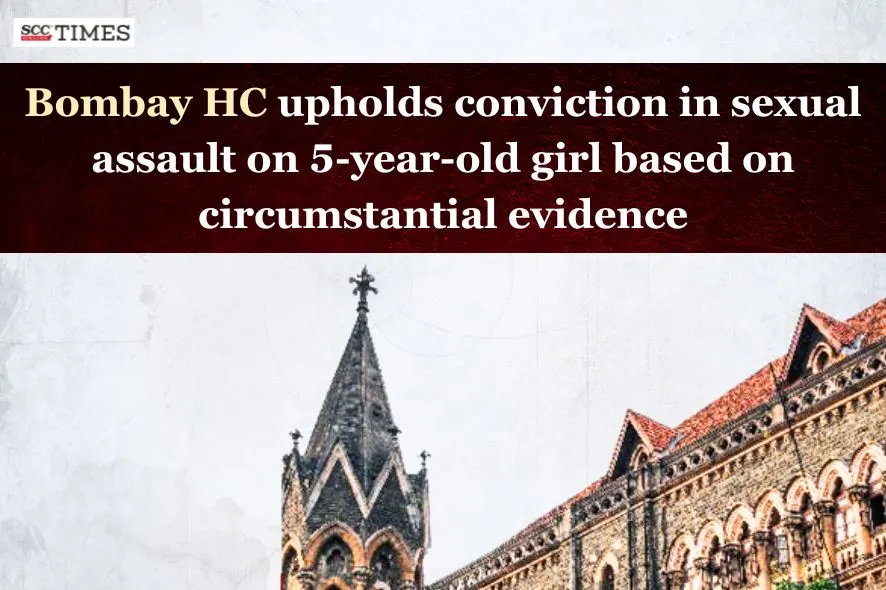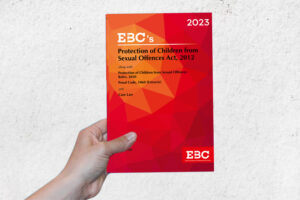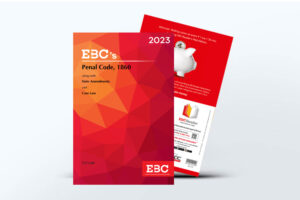Bombay High Court: In an appeal against a judgment wherein the accused was convicted for sexually assaulting a 5-year-old girl, a Single Judge Bench of Shyam C. Chandak, J., while dismissing the appeal, held that the prosecution had proved its case beyond reasonable doubt and the circumstantial evidence, the natural conduct of the witnesses, and corroborative testimonies were sufficient to establish the guilt of the accused.
Background:
The victim was a 5-year-old girl, and her family and the accused were residing in the neighbourhood. On 28-07-2013, the victim’s mother left for her workplace, but she was called back home by her other daughter. The crowd at her house told her that around 11:00 a.m., the victim came out of the accused’s house and she was shouting. When the mother inquired with the victim, she told her that the accused had outraged her modesty. The crowd tried to catch the accused, but he fled away.
The victim told her mother that she was playing with her friend when the accused called them in on the pretext of giving them an orange. He gave one to her friend and sent her away, and thereafter, he removed the victim’s nicker, kissed her and touched her inappropriately. The mother filed a report, and an FIR was registered, leading to the arrest of the accused. However, the accused denied the incriminating evidence and stated that he was not residing in Govandi, and that the witnesses had deposed against him as they wanted to extract money from him.
The Trial Court, on 15-02-2017, convicted the appellant under Section 354 of the Penal Code, 1860 (‘IPC’) and Section 10 of the Protection of Children from Sexual Offences Act, 2012 (POCSO). This conviction was subsequently upheld by the Appellate Court. For the offence under Section 354 IPC, the appellant was sentenced to simple imprisonment for a period of one year and directed to pay a fine of Rs 1000, with a further term of one month simple imprisonment in default of payment, and for the offence under Section 10 of the POCSO Act, he was sentenced to simple imprisonment for five years and ordered to pay a fine of Rs 5000, with an additional one month simple imprisonment in default of payment. The accused’s counsel submitted that there was material inconsistency in the testimonies of the victim, her mother, and her sister. The incident was witnessed by the victim’s friend, but she was not examined. The evidence further indicated that a crowd had gathered in front of the victim’s house, but none of them were examined for corroboration. The medical evidence showed no injury to the victim, and both, the victim and her mother, had not identified the accused as the person who had committed the sexual assault.
However, the respondent’s counsel submitted that the victim’s friend was asked to leave before the accused took the victim inside. The victim went home and narrated the incident to her sisters, and both, the sister and the mother, had corroborated the victim’s version. It was also pointed out that the report was lodged very promptly, ruling out the possibility of falsely implicating the accused.
The victim’s mother testified that she was at her workplace when her other daughter came to inform her that the victim had been taken inside by a neighbor on the pretext of giving her sweet lime. She hurried home, found her daughter crying, and was told about the incident. The mother then went to the police station with her husband and lodged a report. However, in the cross-examination she deposed that it was not mentioned in her police statement that her daughter had informed her about the incident. She denied that she herself was giving information to the police instead of the victim. She admitted that she went to the police station 2 to 3 hours after she came to know about the incident but denied that she had deposed falsely against the accused.
The sister deposed that on the date of the incident, her parents had gone out to work, and the four sisters and her brother were at home. She stated that she saw her younger sister being called inside, where her nicker was removed, her private part touched, and she was kissed on the mouth. The accused gave a sweet lime to the victim and told her not to disclose the incident to anybody. She testified that she confronted the offender directly, asking why he had committed such an act, but he denied it. A crowd gathered, and the offender fled from the backside. She then called her mother.
Analysis and Decision:
The Court found the testimonies of the victim, her mother, and her sister consistent. The immediate disclosure to the family members and the prompt lodging of the report supported the prosecution case. The Court noted that there was absolutely nothing in the prosecution evidence to accept that the report was filed after deliberation and concocting a false story. The Court held that though there were inconsistencies, such as whether the fruit was an orange or sweet lime, or whether the accused had kissed the victim or not, they were not sufficient to disbelieve the victim’s version.
The Court noted that although the victim and her mother did not identify the accused in the Court, their demeanor suggested that they were under pressure. Further, the circumstantial evidence, including the accused’s residence in the same locality, his flight immediately after the incident, and corroboration by other witnesses, established his identity. Further, considering the presumptions in the POCSO Act, an inference is permissible that since the Appellant had committed this crime, he ran away.
The Court, while referring to Section 9 of the Evidence Act, 1872 (‘Evidence Act’), observed that when the identification of a person is at issue, the information that is most beneficial in determining his identity is considered a relevant fact. On their own, certain pieces of evidence may seem devoid of significance, but when considered in conjunction with other facts, they may become relevant.
The Court relied on Visveswaran v. State, (2003) 6 SCC 73, wherein it was held that identification of the accused in the Court or in test identification parade is not a sine qua non if circumstances establish the guilt.
Accordingly, the Court, while dismissing the appeal, concluded that the prosecution had proved its case beyond reasonable doubt and held that the accused was rightly convicted and sentenced under Section 354 IPC and Section 10 of the POCSO Act.
[Kalim Attarli Shaikh v. State of Maharashtra, 2025 SCC OnLine Bom 4463, decided on 14-11-2025]
Advocates who appeared in this case:
For the Accused: Vaibhav Hari i/b. Mr. Kushal Mor.
For the Respondent: Tanveer Khan, APP.





